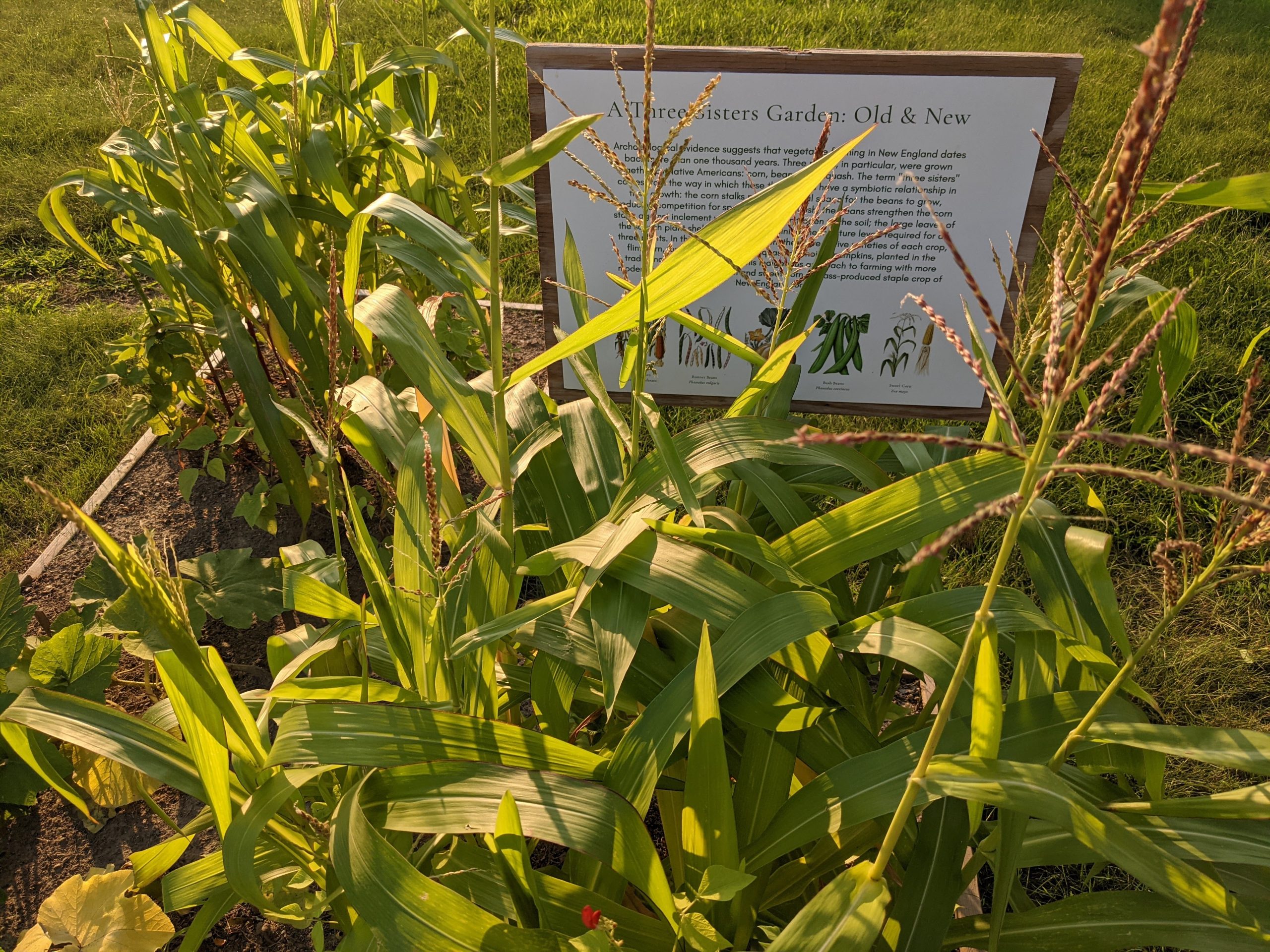
Archaeological evidence suggests that vegetable farming in New England dates back more than one thousand years. Three plants, known as the Three Sisters, were grown together by Native Americans: corn, beans, and squash. The term three sisters come from the way in which these three crops have a symbiotic relationship in their growth: the corn stalks provide vertical space for the beans to grow to reduce competition for space with the squash, the beans strengthen the corn stalks against any inclement weather and add nitrogen to the soil, and the large leaves of the squash plant shelter the soil to maintain the optimal moisture levels required for all three plants. In our Three Sisters Garden, we are growing native variants of each crop: flint corn, runner beans, and our squash of choice, pumpkins. We are also going to compare this indigenous approach to farming with more modern planting techniques for bush bean and sweet corn, still mass-produced staple crops of New England today.
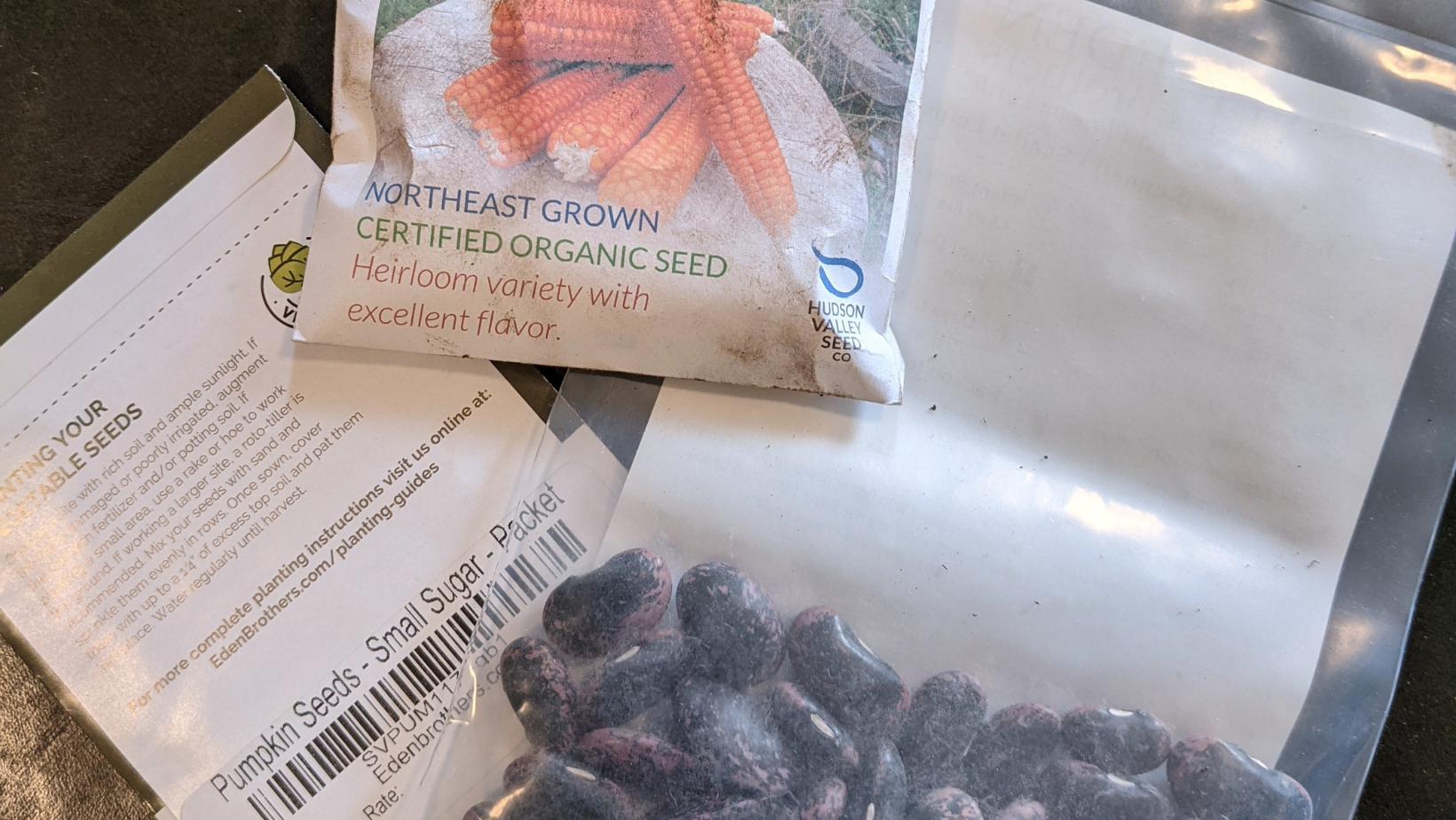
Our seeds for our Three Sisters Garden.
Corn
The first type of corn we are planting is also the first crop of our historic Three Sisters Garden. For this corn, we went with Otto File Flint Corn. Flint corn, or Zea mays indurata, was the variant of corn planted by the local Native American population for centuries prior to the English arrival, and became a crucial part of early colonist survival. In March 1621, after Governor Carver signed a peace treaty with Massasoit Ousamequin, one of his men Tisquantum, or Squanto, stayed behind to teach the Mayflower passengers how to survive off the land. According to Pilgrim accounts, Squanto was quite successful in his teachings:
“We set the last Spring some twentie Acres of Indian Corne … and according to the manner of the Indians, we manured our ground with Herings or rather Shadds, which we have in great abundance… Our Corn did prove well, & God be praysed, we had a good increase of Indian-Corne [sic]” — Edward Winslow, Mourt’s Relation.
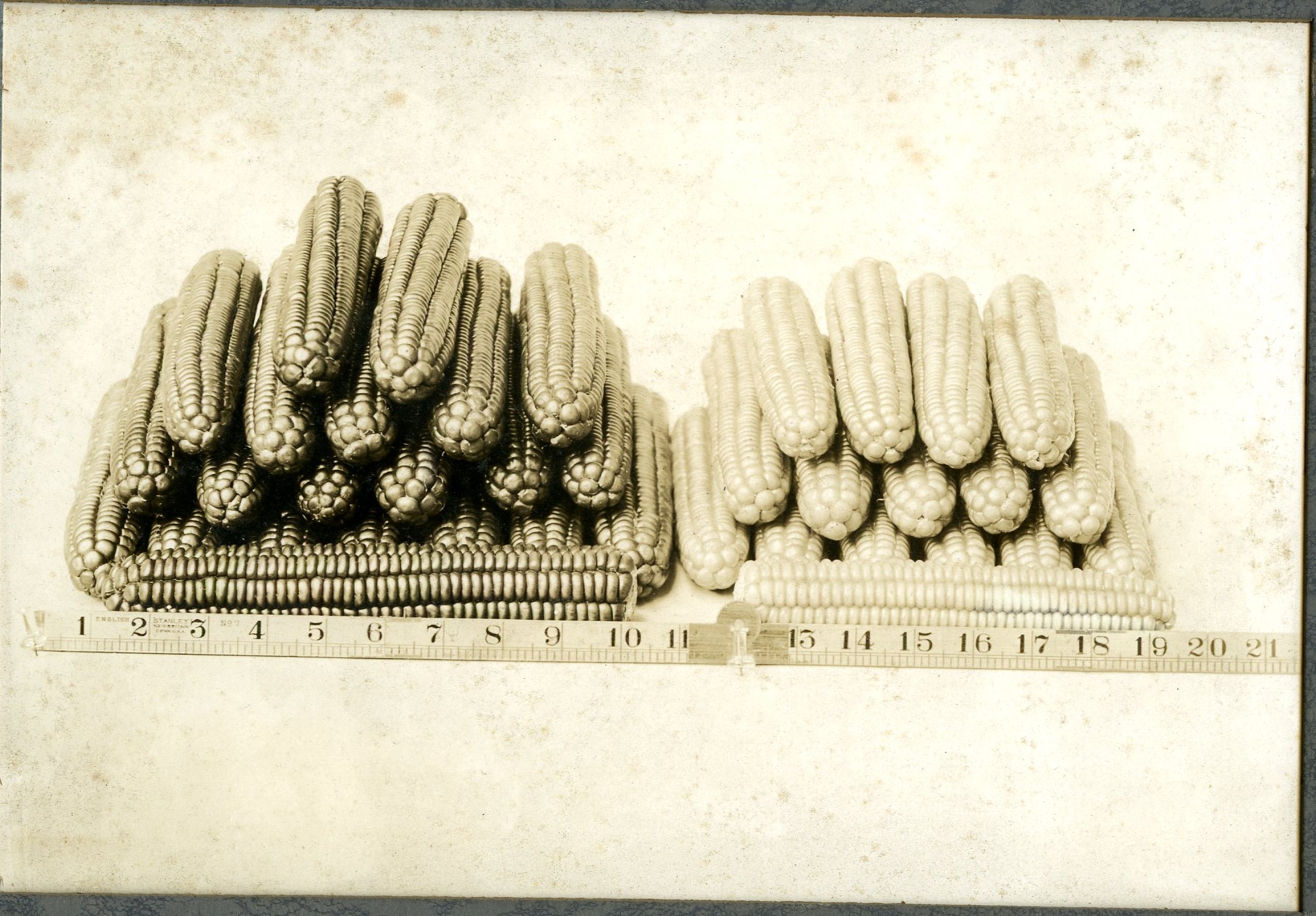
Prize-winning corn from the Mason Farm in Attleboro, 1912. Flint corn(left) and sweet corn judged by the Bristol County Agricultural Society.
Flint corn requires full sun, little water, and will reach its full maturity in about 115 days at six feet tall. It produces long, narrow 8- 12 inch cobs, one per plant. The cobs are more orange than the corn you most often see in a supermarket, and has been prized as a polenta corn for years. Flint corn is also known as a great popping corn. Here is an ad for a tasty popcorn ball from the Taunton Daily Gazette in 1909.
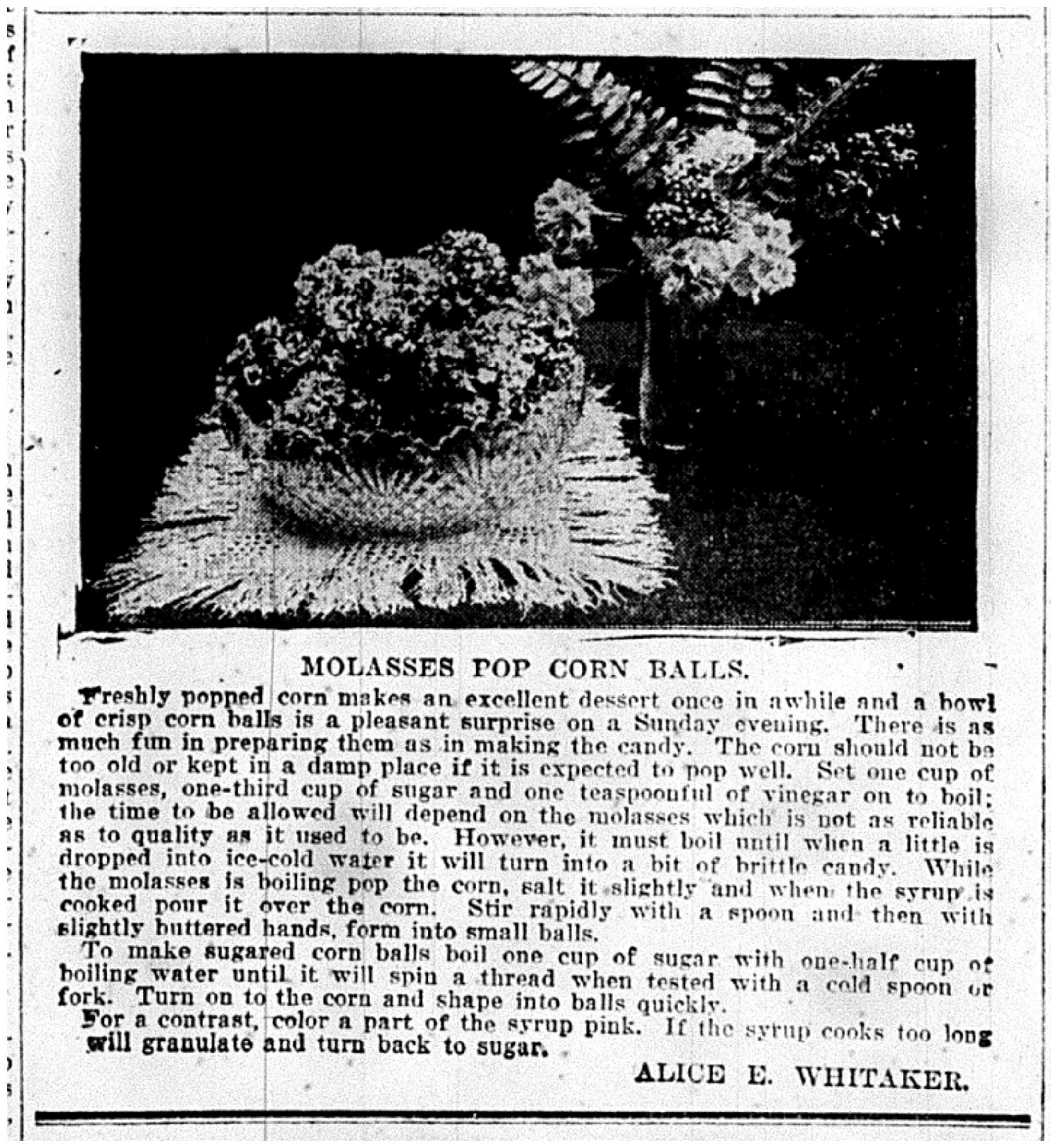
We have an L-shaped bed, in which we plan to have two distinct three sisters groupings. You can see our plans here:
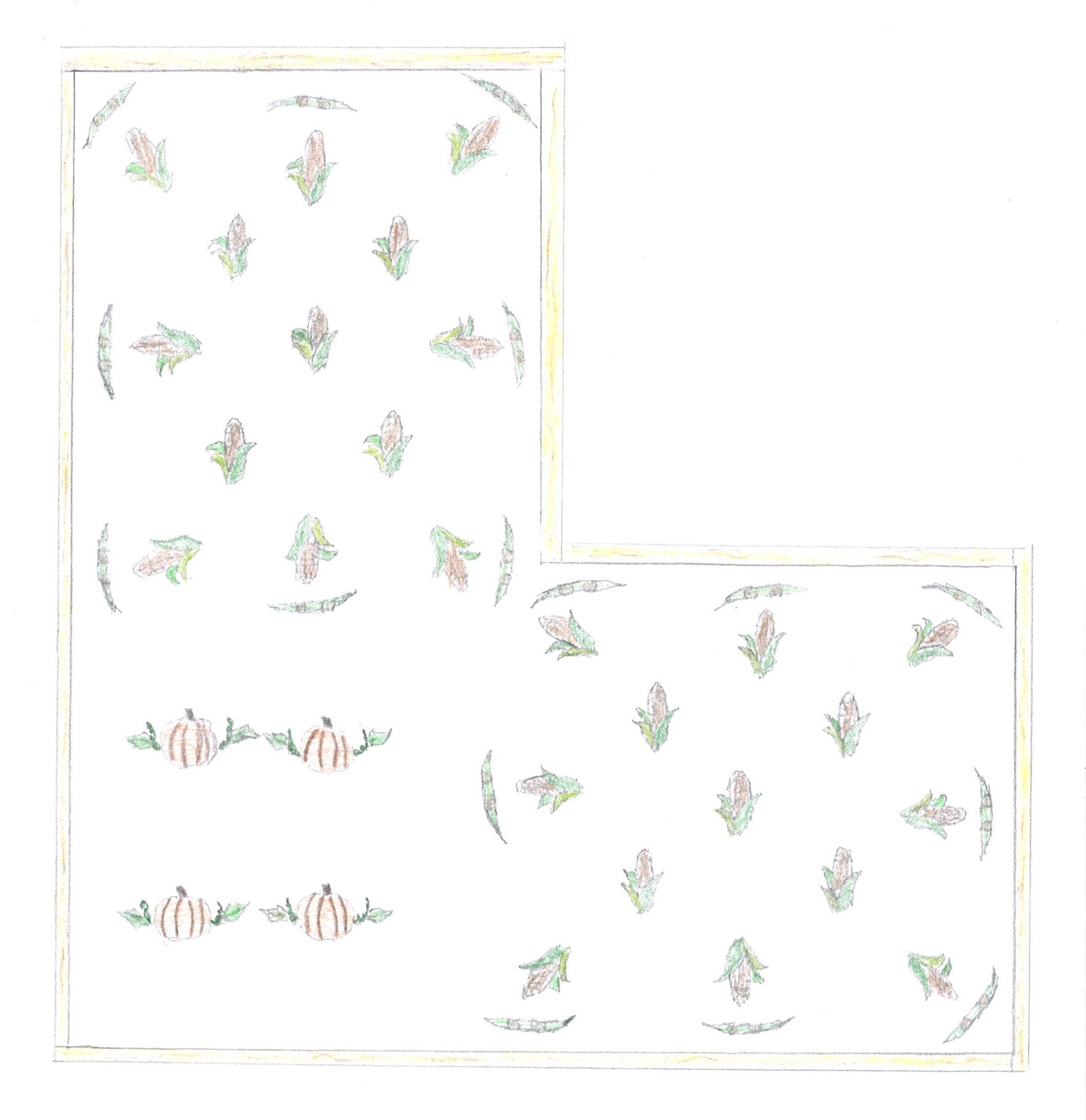
After last frost, we directly sowed our flint corn about an inch into the soil, which had been amended with additional compost. The spacing for our corn is key; for a three sisters planting, we need to plan ahead for the next two plants to join the grouping. So we wanted the corn at the center of our grouping, stalks six inches apart, with plans for our second sister, the runner beans, to join around the outside of the circle in a few weeks. This formation is crucial as the beans need the corn stalks as supports on which to grow.
Here’s our first Three Sisters Garden planting video, focused on flint corn.
For comparison, we also planted modern sweet corn. Sweet corn is one of the more popular types of corn grown in New England and is a staple crop of farmers in this region. Our sweet corn, an ambrosia variety, has very similar planting requirements to flint corn. We planted the seeds one inch in the soil, and like flint corn, sweet corn requires full sun and little watering. The biggest differences are the maturity times, sweet corn matures about 30 days before flint, and the harvest yields; flint corn produces one single ear per stalk, whereas sweet corn will produce two to three ears per stalk.
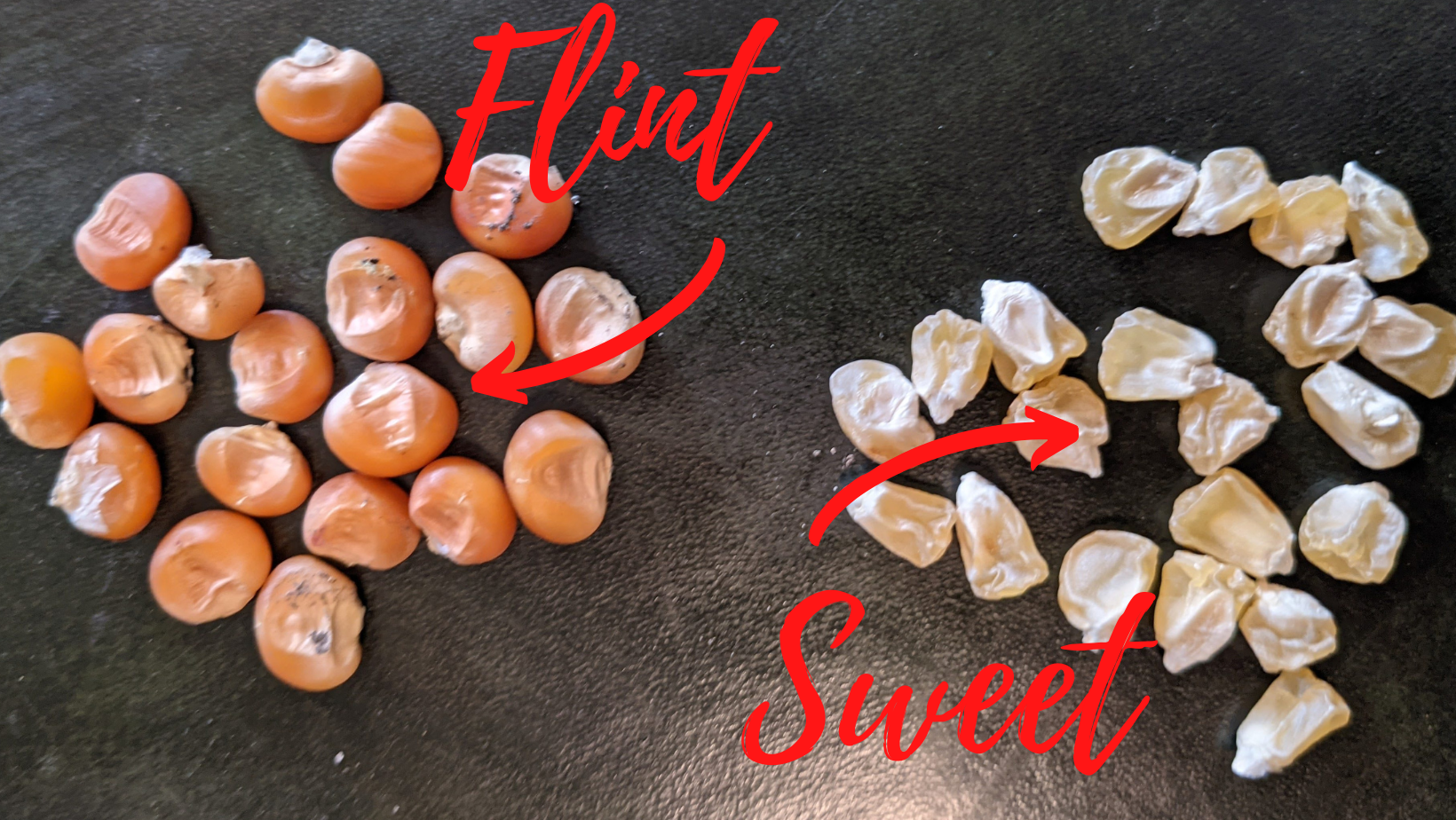
And this is how we planted our sweet corn:
Runner Beans
Runner beans were first cultivated in Central America nearly 4,000 years ago. In New England, runner beans, along with flint corn, squash and artichokes, were among the first crops identified by Samuel de Champlain during his voyage along the Cape Cod coast in 1605. Beginning in 1621 runner beans were one of several crops for which the colonists sought native cultivation advice. Runner beans are excellent sources of nitrogen and will aid the growth of any other compatible plants they are grown with. Our runner beans are scarlet emperor beans, often grown today for ornamental purposes due to their bright red flowers.
On May 25 we planted runner beans. Because they grow up the corn stalks for support, we waited for the corn to be about 6 inches tall before planting the beans. Each bean got a small amount of compost in it’s planting hole, and we planted in a ring outside the corn, which you can see here:
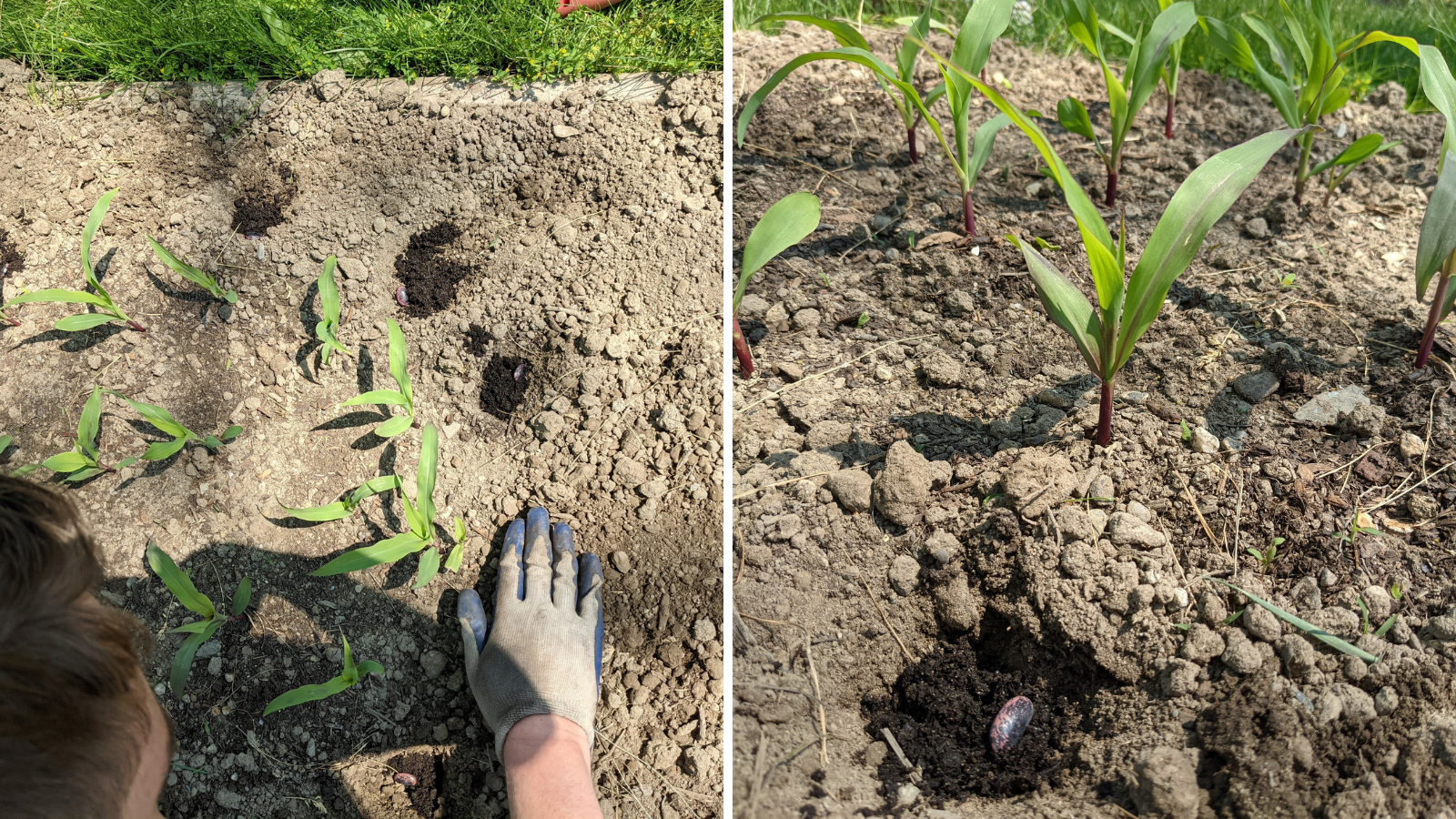
An here’s a video from that planting:
Pumpkins
The third sister in a Three Sisters garden is typically a squash, and we chose to grow pumpkins. Pumpkins, a type of winter squash, is native to North America and was a domesticated plant as early as 7500 BCE. Locally, archaeological evidence suggests that New England indigenous people had begun farming pumpkins as far back as a millennium ago. Pumpkins were one of the first crops identified by European traders in the 17th century, and by 1630 were a favored crop of the first Plymouth Colony settlers. So loved was the pumpkin by the first English settlers that, in 1636, a law was passed in Cambridge to levy hefty fines on the owners of any chicken, hen, or turkey that damaged a pumpkin plant in the town. Our pumpkin of choice, the small sugar pumpkin, is ideal for pumpkin pies and will only reach a maximum weight of 5 pounds.
We planted pumpkins last, Here you can see our growth from seed, to first sprouts, to the third sister rounding out the garden in June.
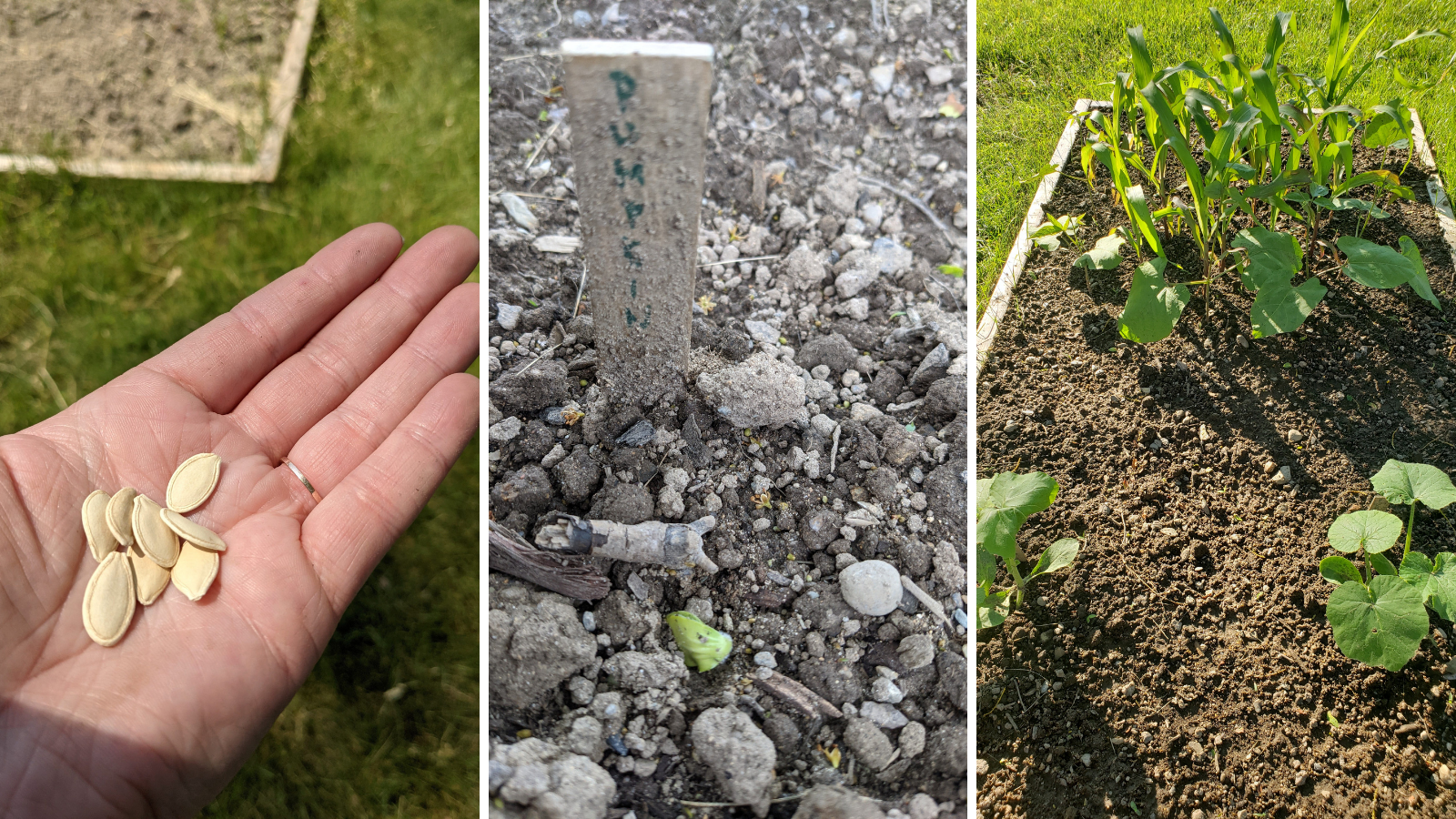
Updates
June 11
Everything is up and growing!
July 2
Corn made it “knee-high by the Fourth of July.” Here you can see the difference a month makes!
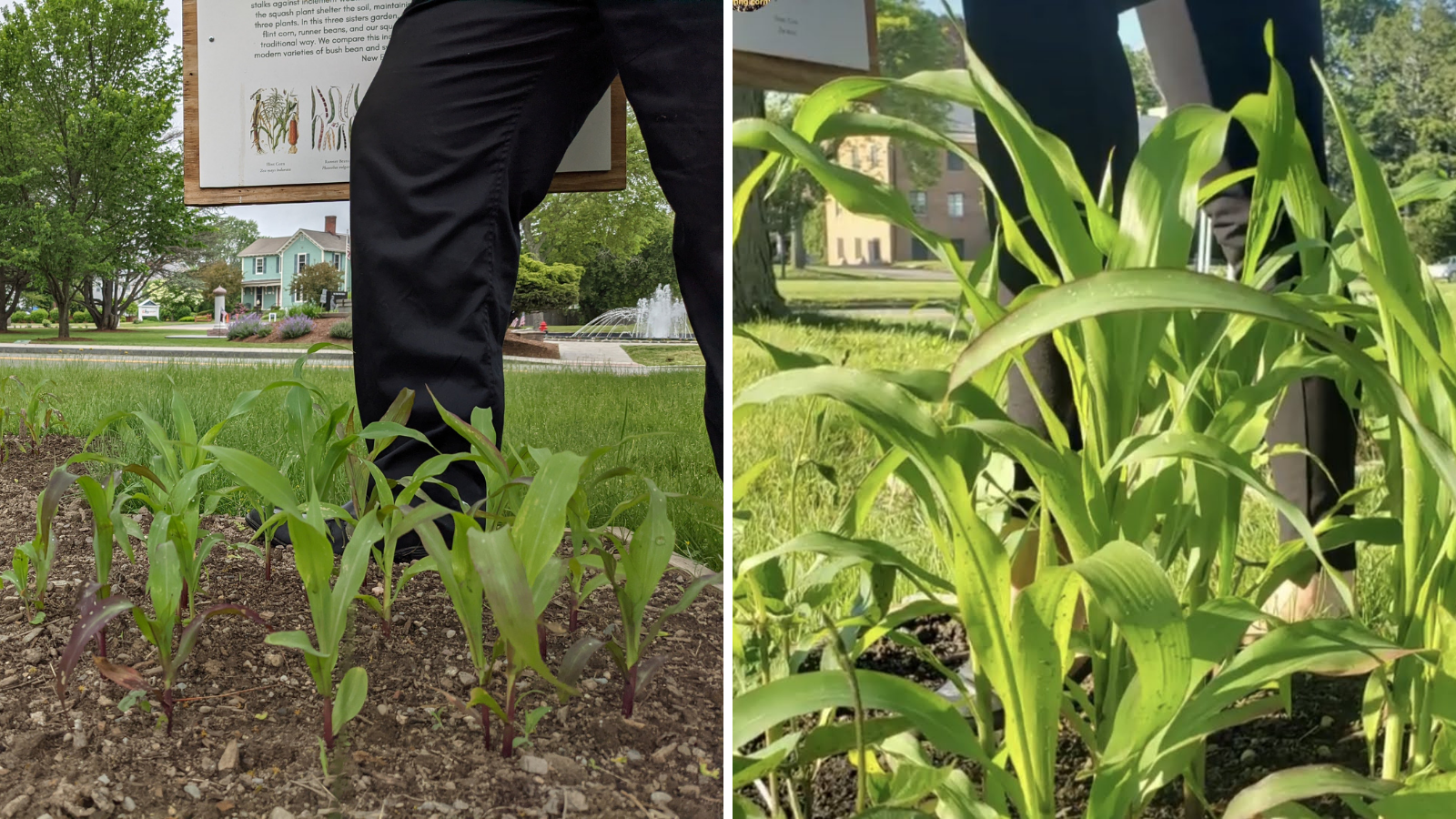
July 27
Sister 1: Flint corn is starting to show tassels, but it’s all about whether they were able to wind pollinate if we get good cobs or not.
Sister 2: No runner beans yet, but there are beautiful flowers and the plants have certainly run their way up the corn stalks.
Sister 3: The pumpkin plants have lots of flowers which bodes well for some small sugar pumpkins! We had one unfortunate incident with our landscaping company and one vine trailing out of its bed, but things are still looking good overall.
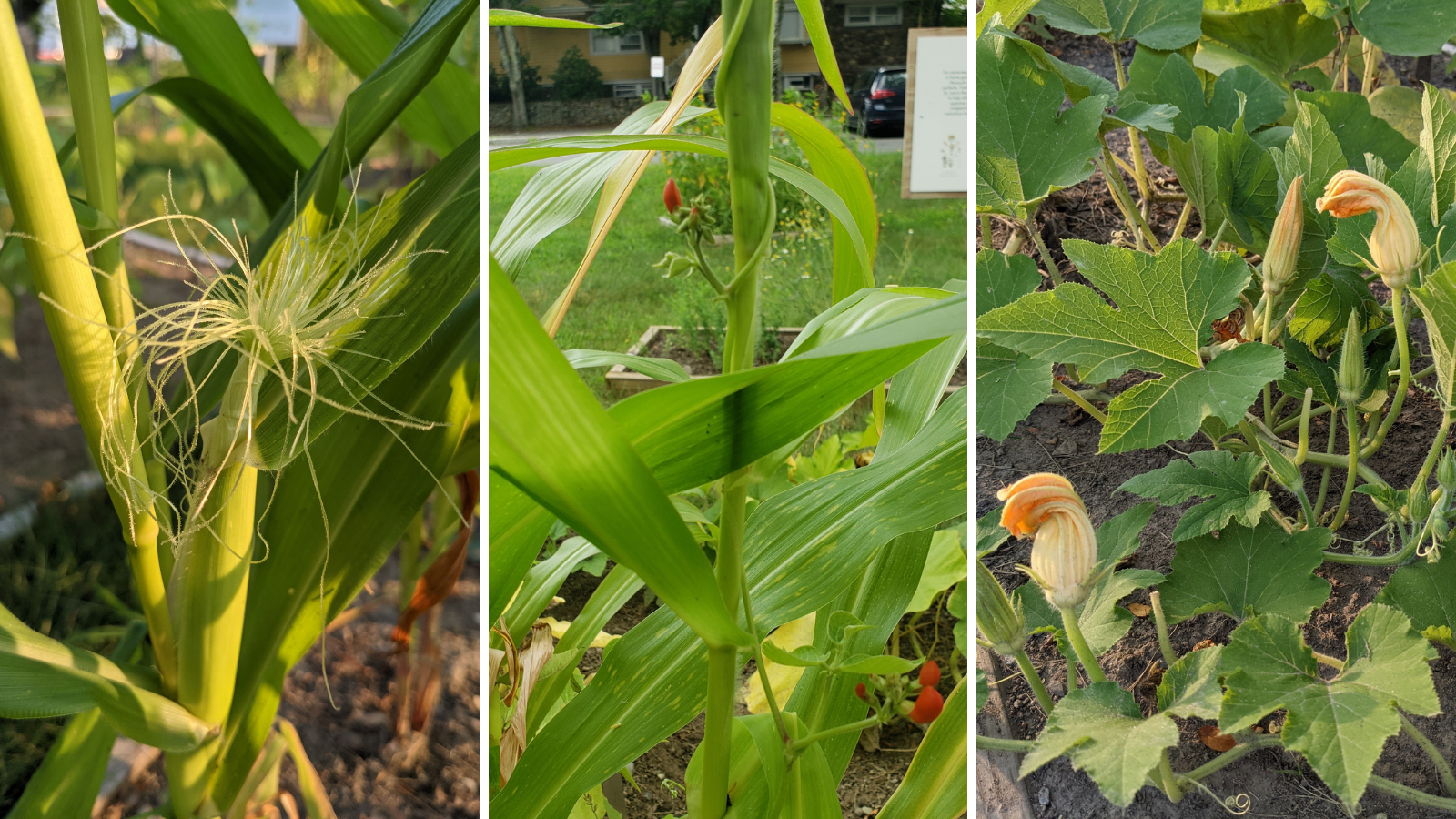
Be sure to check future updates as we add our next sisters and to see how the garden is growing.
The post Growing a Three Sisters Garden first appeared on OCHM.
